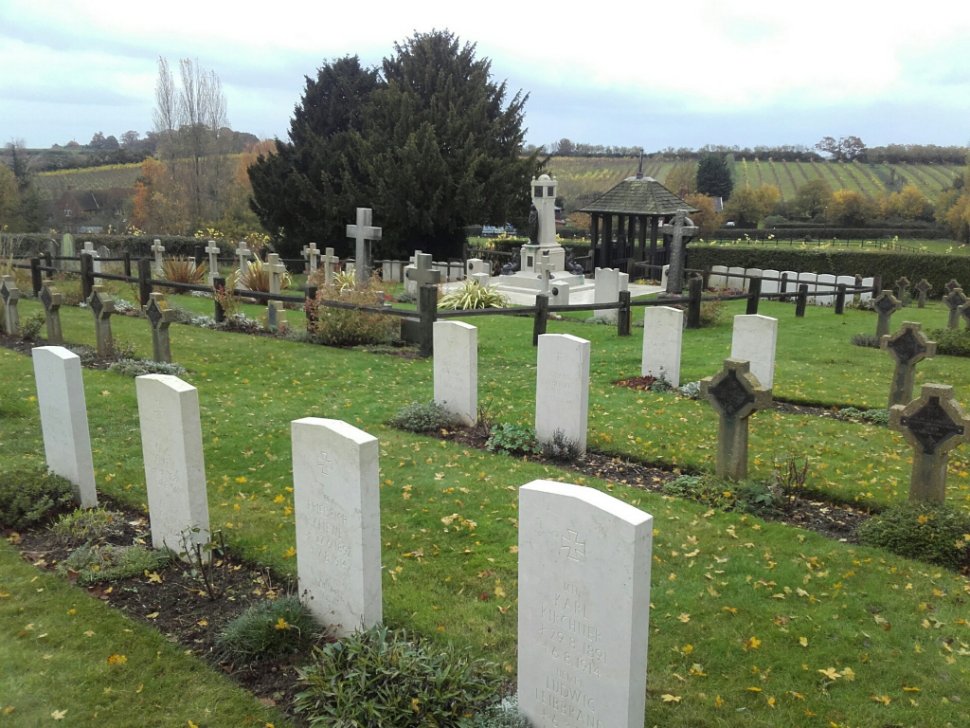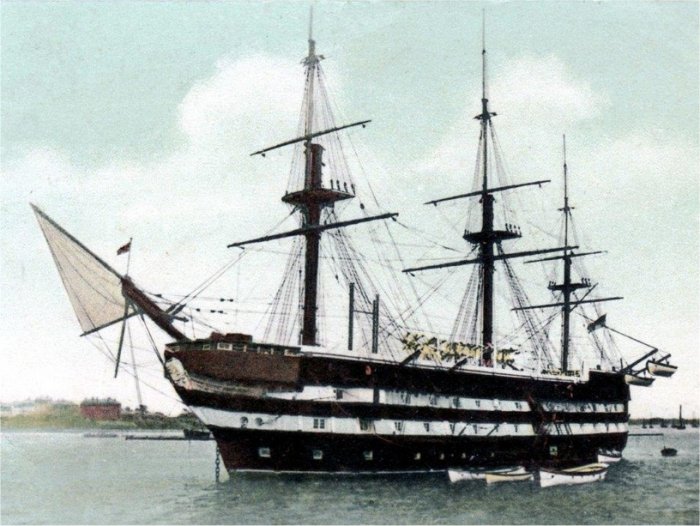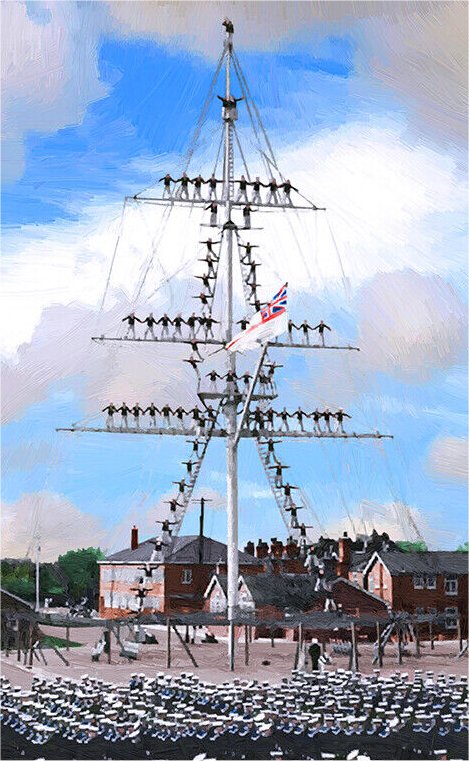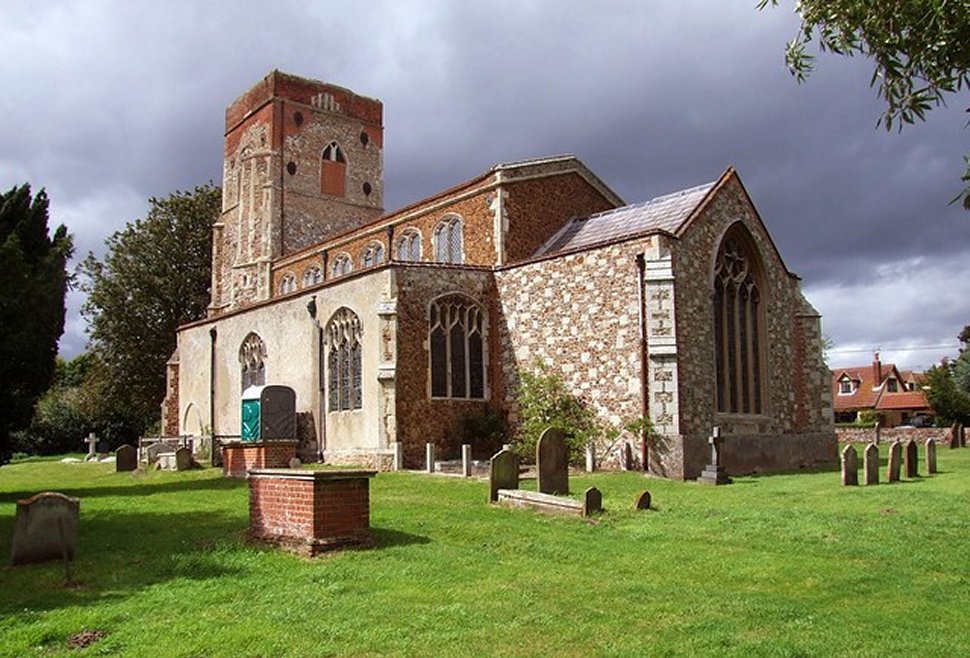Felixstowe Dock was originally created by Colonel Tomline, an eccentric landowner from Orwell Park, who bought the Landguard Marshes in order to create a new holiday resort on the sea front, and on Harwich Harbour he planned a massive port to rival London and Hull. Tomline ran out of capital long before his bright ideas got anywhere near working. He did open the new Felixstowe Dock in 1884, which had been dug in a creek. That was as far as it went, but Tomline had planned a whole series of docks on the marshes.
Barge and small coaster traffic came to Felixtowe, but it was of such a small scale that when the National Dock Labour Scheme was created in 1948, it was not drawn into it. The Dock Labour Scheme created restrictive working practices which made most British ports slow and expensive. Gordon Parker, who controlled a large Norfolk corn handling business, became so exasperated by the difficulties of trying to speed up King's Lynn that he bought the dock basin at Felixstowe to handle his goods.
Parker bought the dock basin in 1951 and two years later the whole area was devasted by the East Coast Floods. Parker and his general manager, Ian Trelawney, set about repairing the dock and improving trade. Felixstowe was always unionised, but the port workers came off farms, out of shops and other local occupations and did not have a long tradition, like the dockers from the established ports, of non-cooperation with port managers. While other ports struggled with their labour relations Felixstowe moved goods quickly and started to expand.
Another stroke of luck for Felixstowe was that the dockers in the large ports refused to handle containers. The Felixstowe Dock Company welcomed containers, and the Landguard Container Terminal was built in 1967. Although Grangemouth had opened a few months earlier, with Felixstowe being near the open sea, and the port's close proximity to Europe, it soon became the main British container port.
We were the only vessel in the lock at Shotley marina. Berthing was painless; 22.5 hours after we left Middelburg.
The Shotley Peninsula is a small stretch of land between two great Suffolk rivers, the Orwell and the Stour. Whilst the Peninsula's flat, rural landscape is surrounded by water it opens up to an enormous sky above, a vast stage upon which theatrical sunrises and sunsets play out on a daily basis. At Shotley Point, the two rivers meet before emptying into the grey North Sea.
With a river either side and the sea in front, Shotley Peninsula is a boater's paradise. It was used as the setting for Arthur Ransome's classic children's book, "
We Didn't Mean to Go to Sea," and the charm of Ransome's Shotley has not faded: pretty sailing boats are moored up and down the coast of Shotley Peninsula, reminiscent of a bygone era of boat travel, the daily catch, and long summer days.
On the northern side of Shotley Peninsula is the River Orwell, a navigable waterway with mudflats that during the winter are crowded with beautiful birds. Local writer Eric Arthur Blair loved the river so much he took it as half of his pen name, George Orwell.
To the south of Shotley Peninsula is the River Stour, which if followed will take you right to the heart of Constable Country: the verdant, historic landscape that bore the painter John Constable, and was the subject of his most famous painting,
The Haywain. A few years back Rex and I sailed up the Stour to Mistley, where we experienced a minor earth upheaval. As we sailed quite close to the quay, a minor tremor raised the seabed by a short distance, enough for it to catch on Duonita's keel. Rex cursed fluently as he struggled to wriggle us free.
The Stour and Orwell meet at Shotley Marina, a departure point for anyone exploring the two rivers or venturing across to the continent. From the marina you can watch at a distance impressive freight ships steaming in and out of the great industrial expanse of Felixstowe Docks, with mountains of containers being loaded and unloaded. To the south lies the historic port of Harwich. A foot ferry connects Shotley Marina, Felixstowe and Harwich. Thames barges can often be seen traversing this vast natural harbour, full of London bankers sipping Pimms in the sunshine, wondering where their next bonus is coming from.

St Mary's Church Commonwealth War Graves
|
Near the village of Shotley stands St Mary's Church. Its churchyard is one of the most haunting in East Anglia, filled with the graves of mostly teenage lads sent out by HMS Ganges to die in accidents and wars. Some of their bodies were brought back for burial, but most often these are mere memorials to young boys lost deep beneath fathoms of filthy, icy water. The churchyard is also home to a large naval cemetery cared for by the Commonwealth War Graves Commission. It has graves from both World Wars, with 99 Commonwealth burials of the 1939-45 war, including 3 unidentified sailors of the Royal Navy and 1 unidentified seaman of the Merchant Navy. There are also Dutch Navy and German burials here.

HMS Ganges
|
Of note at the marina is the HMS Ganges Museum, which tells the story of HMS Ganges with many exhibits, photographs and artefacts on display. The Royal Navy Training Establishment at Shotley opened in 1905 and over 150,000 Naval cadets were trained up until it closed in 1976.
The increasing professionalism of the Royal Navy and the reform of practices during the mid-nineteenth century led to the need to establish new training centres at which recruits could be inducted into navy life. The Admiralty decided to set aside five old laid up hulks in different ports around the country, and use them as bases at which volunteers aged between 15 and 17 could spend a year being educated for future service in the navy. The plan called for an annual intake of 3,500 boys. They were to be trained in seamanship and gunnery, as well as traditional aspects of sea life. One of the hulks chosen to be converted into a school was the old 84-gun second-rate ship of the line HMS Ganges. Despite initial objections that her layout made her unsuitable for the task, the decision went ahead.

Climbing the Mast
|
HMS Ganges was a training ship of the Royal Navy. She was established as a boys' training establishment in 1865, and was based aboard a number of hulks before moving ashore. She was based alternately in Falmouth, Harwich (from 1899) and Shotley (from 1905), where she remained in service until October 1976.
As an aside, when I started courting (there's an old-fashioned word) my wife to be, Rosie, the first time I went to visit her parents in Wembley, she took me to visit Mr Woods. When Rosie was at secondary school, pupils in their later years at the school were each allocated an elderly member of the local society to take under their wing. Rosie became Mr Wood's friend. He was a friendly character with a tale to tell. He had grown up at Distington in West Cumbria, only a couple of miles from where I grew up. As a lad he was trained at HMS Ganges, and subsequently served in the Royal Navy during World War II. His claim to fame was he had received a medal from Russia for his services during the war. Sadly, my memory fails me regarding the details for that award, though I am aware that many sailors received Russian medals as recognition of their courage exhibited on the convoys that supplied Russia.
Redevelopment of the former HMS Ganges was first proposed in 2000, with a series of retirement homes planned for the site. The site remains undeveloped and its future is uncertain. The site has had planning permission granted in principle.
Occasionally, when I am land based, I will head down to Shotley where a few pleasant walks can be had. The obvious walk to try is The Arthur Ransome Walking Trail which can be followed from Shotley Pier to Pin Mill, along the bank of the River Orwell. The Two Rivers Walk takes in St Mary's Church mentioned earlier. But if you like to stretch your legs, opt for The Farms & Rivers Walk, a pleasant 7.5-mile stroll which takes in Erwarton Church en route.
Behind Erwarton's gothic gatehouse lies a Tudor Hall forever linked to the most famous of King Henry VIII's wives: Anne Boleyn - she loved it so much, legend has it, that when she died, she asked that her heart be buried there. The second wife of the King and the mother of future queen Elizabeth I, the two main players in the English Reformation, Anne was a regular visitor to Erwarton Hall where her aunt Amy and uncle Philip lived.
It's believed that Henry visited Anne at the Hall when they were courting and deeply in love: just three years after the couple married, Queen Anne Boleyn was executed by beheading within the confines of the Tower of London after being found guilty of high treason.
Her body was taken by her distressed ladies in waiting and carried to the nearby Chapel of St Peter ad Vincula. Placed in an old elm chest which had once contained bow staves from the Tower, her head and body were reunited and she was buried in the chancel close to the remains of her brother, Lord Rochford. And that was the end of Anne Boleyn. Or was it?

Erwarten Church
|
During Victorian-era renovations in 1837, a heart-shaped tin casket was discovered in the chancel wall of St Mary's Church at Erwarton, filled with dust. It was reburied beneath the organ with a small plaque marking the spot which made the claim that the former queen's heart had been brought to the church by her uncle, Sir Philip Parker following her execution on May 19 1536. Whether the heart was indeed buried at the church or not, the Philip in question is incorrect - Sir Philip Parker was a later owner of Erwarton Hall, Anne's uncle was Sir Philip Calthorpe, who had married her aunt Amy.
The next few hours were a blur. I caught up on some much-needed sleep and showered. We both ate a hearty breakfast; Rex loves a cooked breakfast, and he loves cooking them, but found the wafer thin Dutch bacon a challenge. Then, laden with calories, Rex submerged for a sleep while I traipsed off to the Bristol Arms to book a table for he evening. Life is never straightforward. After collecting all my details: a bit like registering an account on line where you have to generate passwords, prove you're not a robot, and swear eternal loyalty. I entered into the next phase.
"Where would you like to sit, sir?"
"Outside please."
"But we don't do reservations for outside."
I glared at the young man.
"OK, we'll book a table outside. What table would you like, sir?"
"Out the front there, overlooking the harbour."
"What number, sir?"
"Well ….. just out there."
"I'll give you table nine, sir, there is less wind there."
Hmm … Rex can create wind on any table.
After that mammoth task, I walked across the road to calm down by gazing across the harbour towards Harwich and Parkeston Quay. It was scorching hot. I bit my tongue, and re-entered the pub, and ordered a pint of lemonade, and sat down at a table at the front of the pub and watched the world go by.
I had only been sitting for a few minutes when a woman with her ageing mother ever so slowly made their way to the next table. The doting daughter patiently ascertained what her mother would like to eat and drink, and then went off to order. A short while later she returned, relating to mam how the barman was fixated at what table number they were sitting. "I just told him the end table," she said, "and he just answered 'They all say that' ". Ah, must have been the same chap I attempted to parley with earlier.
A car parked up in the disabled parking place opposite the pub. Out climbed an elderly gent, who sauntered out onto the road while his carer was getting out of the vehicle. The poor old chap started to perform arm swinging exercises in the middle of the road, oblivious to traffic coming up behind him. God, is this going to be me in a few years' time I thought? But I bet the old chap was totally happy in himself.
As we headed out for our evening meal, we got chatting to a couple on a neighbouring boat. They kept their boat in Shotley permanently, which was handy for them as they lived just up the hill from the Bristol Arms. Since Shotley and Burnham-on-Crouch marinas are owned by the same company, they were allowed to berth in Burnham-on-Crouch for free anytime they wanted. We all whinged about the state of the facilities at Shotley marina, and concluded the owners were only interested in raking in money from the boats, and not updating the facilities, or running them in a better fashion.
As Rex and I left the harbour master's office, we moaned about the cost of berthing at Shotley. At the time of writing this was £34.20/night, compared with Euro 14/night at Dordrecht!
At the Bristol Arms, our first drinks orders were either off or cloudy. This was a tad reminiscent of a pub we had visited in Gillingham once, a town where we ended up leaving the boat there for a while, and we returned back to East Anglia by train until the weather improved enough to resume our sailing trip. Rex still has cold sweats about the place. In addition to the Bristol Arms drinks being a bit hit and miss, there was an evil sewage smell lurking near the front seating area outside the pub. Fortunately, there were enough empty tables outside, we just moved around the corner to escape most of the smell. Having said that, we ate well.
Back on board
Duonita, we listened to more amusing anecdotes from The Wit of Cricket, stories featuring cricket's best-loved personalities: Brian Johnston, Henry Blofeld and Dickie Bird. Sadly, the CD player started playing up towards the latter tracks. Undeterred, Rex then migrated to playing various blues tracks from bands I'd never heard of.
"Why do you only play one track, and then change the CD?" I asked. "I liked that track and it would have been good to hear more."
"I wasn't getting any feedback, so I presumed you didn't like it," was his response.
Hmm … I like to enjoy good music, but I can't indulge in an articulate conversation about bands, musicians who move around bands, the history of bands, the lyrics and styles of playing etc. Perhaps I've had a misspent youth, or never became cultured. Does it matter?







